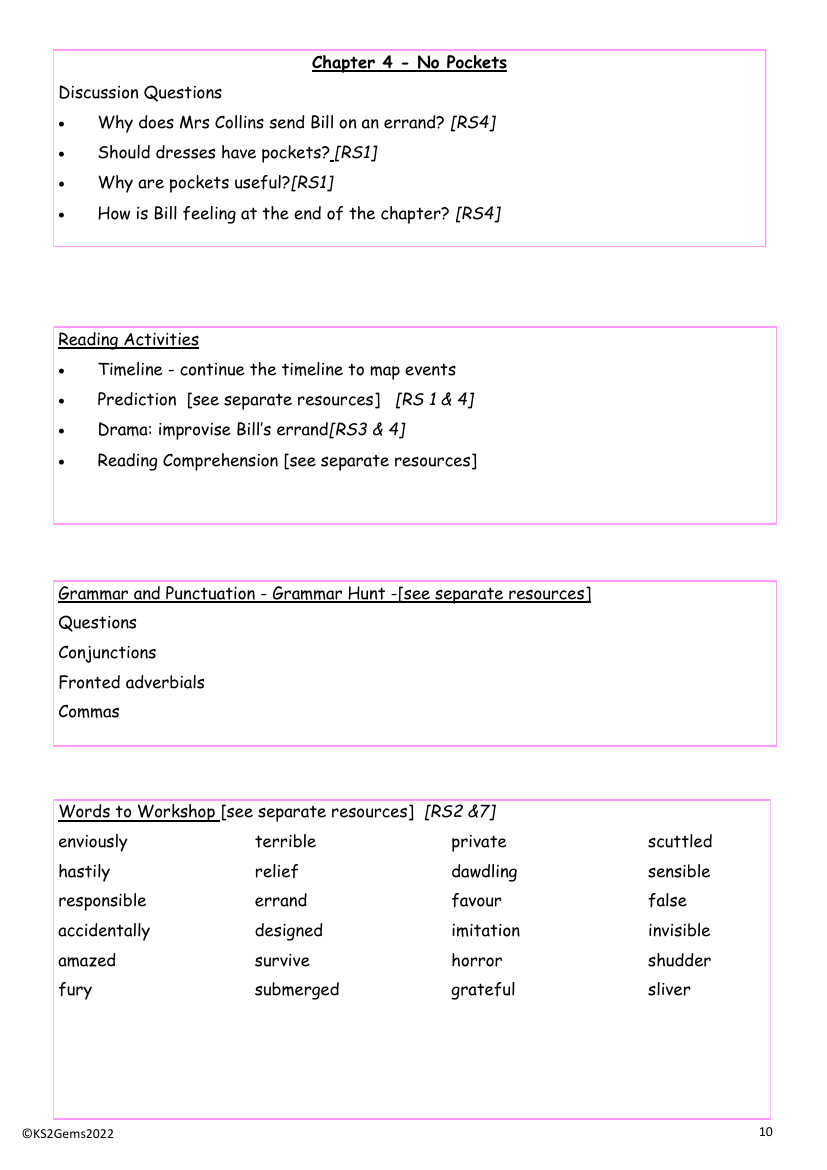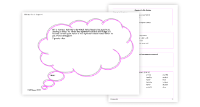Bill's New Frock - Chapter 4 - Worksheet

English Resource Description
In Chapter 4 of "Bill's New Frock", titled 'No Pockets', the worksheet provides a range of engaging activities and discussion questions designed to deepen students' understanding of the text. Discussion questions prompt students to consider the reasoning behind Mrs Collins sending Bill on an errand and to explore the practicality and gender implications of clothing design, such as whether dresses should have pockets and why pockets are useful. The emotional state of Bill at the end of the chapter is also a topic for reflection, encouraging students to engage with the character's feelings and the narrative's progression.
The accompanying reading activities include extending a timeline of events, making predictions about future chapters, engaging in drama by improvising Bill's errand, and a focused reading comprehension exercise. Grammar and punctuation are addressed through a 'Grammar Hunt' that covers conjunctions, fronted adverbials, and the use of commas. Additionally, students are encouraged to expand their vocabulary with a 'Words to Workshop' section that presents a variety of words for them to explore and understand in context. Writing opportunities include composing persuasive letters from Bill to a dress designer about including pockets in dresses, and an apologetic letter to Mrs Bandaraina for causing a mess in the school office. The chapter concludes with a discussion on the necessity of pockets in dresses, encouraging critical thinking and debate.
Cross-curricular links are abundant, with connections to science topics such as human anatomy and the concept of evolution and inheritance. History lessons can compare the education and clothing of boys and girls throughout different eras, while geography tasks involve mapping the local area and the children's routes to school. Computing introduces a creative project where students can design a maze game based on Bill's route to school, and in Design and Technology (DT), students can apply their knowledge by designing a dress complete with pockets. Lastly, the chapter touches upon PSHE themes such as respect, tolerance, self-esteem, empathy, gender identity, and celebrating differences, offering a holistic educational approach that goes beyond the traditional curriculum.




